Outdated medical device marketing is out of sync with the rapidly changing MedTech industry. This article outlines a new and effective approach.
“Adapt digital marketing”, “Use case studies” and “building relationships” are insufficient marketing advice. These marketing ways are sound but if applied without an overarching strategy, they turn into an accumulation of tactics that comes with an expiration date.
Yet still, what medical device marketers today claim to be a “strategy” is more of a loose structure than it is a grounded strategy. In this article, I’ll share with you a new and tested strategy that will overhaul the way you market your medical device firm.
This article contains:
- Brand Storytelling Strategy: The New way of marketing your medical device firm and products
- Its practical use and examples in the complex MedTech industry
- How Storytelling skyrocket your annual sales
- The science behind trust-creation using this strategy
- The 4 Stages of brand Storytelling strategy
- What are Story Blocks & Core Messages?
- Communication Framework Development
- How to build a brand preference for your firm?
- The truth about medical device marketing
Brand Storytelling Strategy: The New way of marketing your medical device firm and products
I’m sure you’ve heard of the term “storytelling” before. I’m also equally sure that you’re still wondering about the practical application of this strategy and its validity in a closely-regulated industry like healthcare.
Today, I’m going to peel off the layers of ambiguity around this strategy. We’ll look at what is brand storytelling, its practical use, and the 4 stages of building a storyboard to market your medical device firm/products. We’ll also go over some examples and how this strategy can shift your position in the market and establish your firm as a leader.
What is a medical device storytelling strategy?
Brand Storytelling is a strategy used to communicate with your target audience in a novel, digestible, and more trustworthy way. The strategy focuses on creating inspiring stories around your brand, its products, and your audience.
The science behind storytelling strategy and why it works
Trust is the ultimate shortcut to a buying decision and the bedrock of modern branding.
― Marty Neumeier
According to a recent study by the University of Iowa, most of our decision-making is processed in the limbic system, the part of the brain that is responsible for emotions and trust responses. Harvard Business School professor Gerald Zaltman, further says that 95% of our buying-decision are based on emotions.
There’s a prominent correlation between trust and buying decisions. In fact, According to the research done by Headstream, great stories created purchase intent in 55 % of surveyed consumers.
But in healthcare, matters are different.
You see, trust plays an even bigger role when it comes to selling your products to medical professionals. To see why this is the case, let’s tackle a sales experiment by Neil Rackham.
In his book, SPIN Selling, Rackham illustrates how different products require different strategies depending on how big is the buying-decision.
In one chapter, the author describes an experiment in closing.
A photography store had two different counters—one for small purchases (film, cheap cameras) and one for the expensive products (SLRs, pricy lenses).
At the small-ticket counter, the sales staff routinely used high-pressure closing techniques with success.
At the high-ticket counter, a different team of reps took a more trust-induced, low-pressure approach (with a focus on building rapport), also with success.
So the store had the reps switch counters.
And the reps who were accustomed to twisting arms failed—hard.
The closing techniques that worked well on small purchases backfired with customers considering bigger items.
Meaning, As the decision size increases, the sale becomes more and more about trust.
Here’s a graph that illustrates how trust relates to decision making.
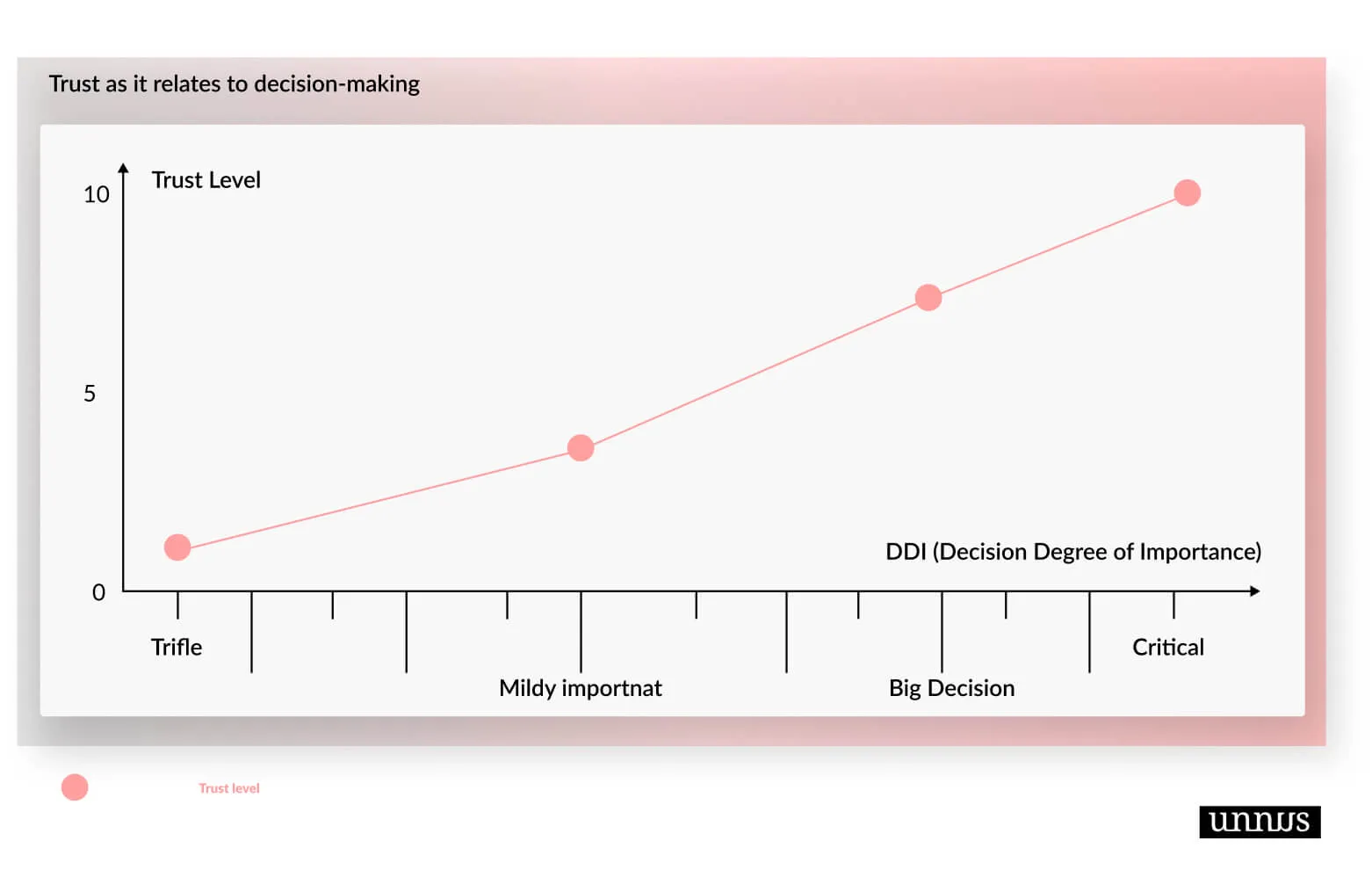
Medical professionals must trust your brand and the product it sells. If you can’t create trust, it’ll be hard to navigate product launches. This is where storytelling comes into play. It creates trust-inducing stories and builds familiarity with physicians and other medical professionals.
The 4 stages of a medical device brand storytelling
Now that you have a good idea of what this strategy is about, let’s see its four components. Brand DNA Development, Core Messages, Secondary Messages, Communication Framework.
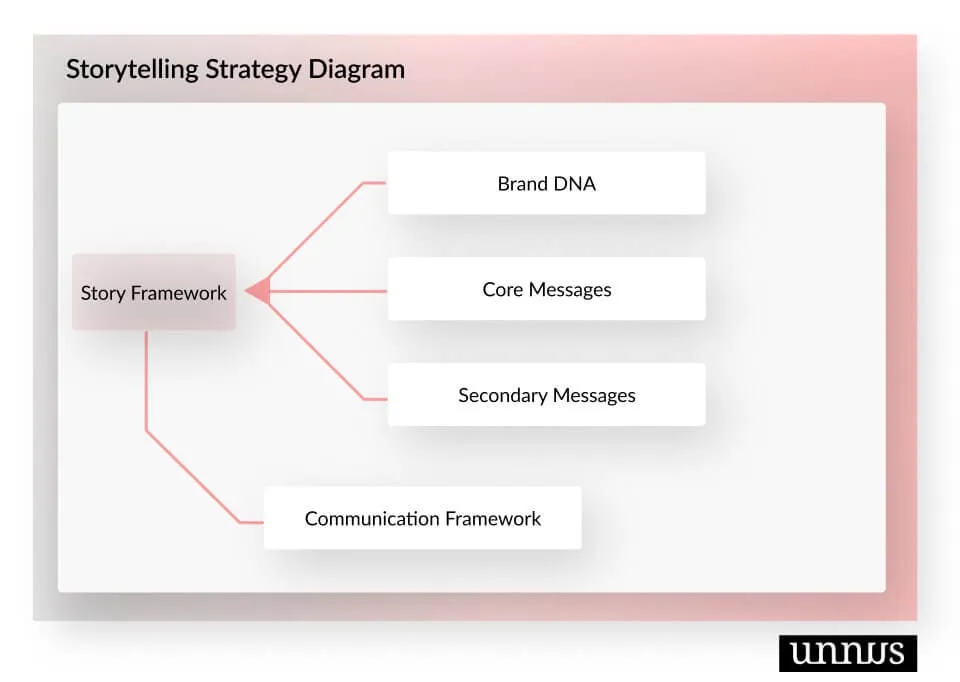
Stage 1: Cultivating a Brand DNA
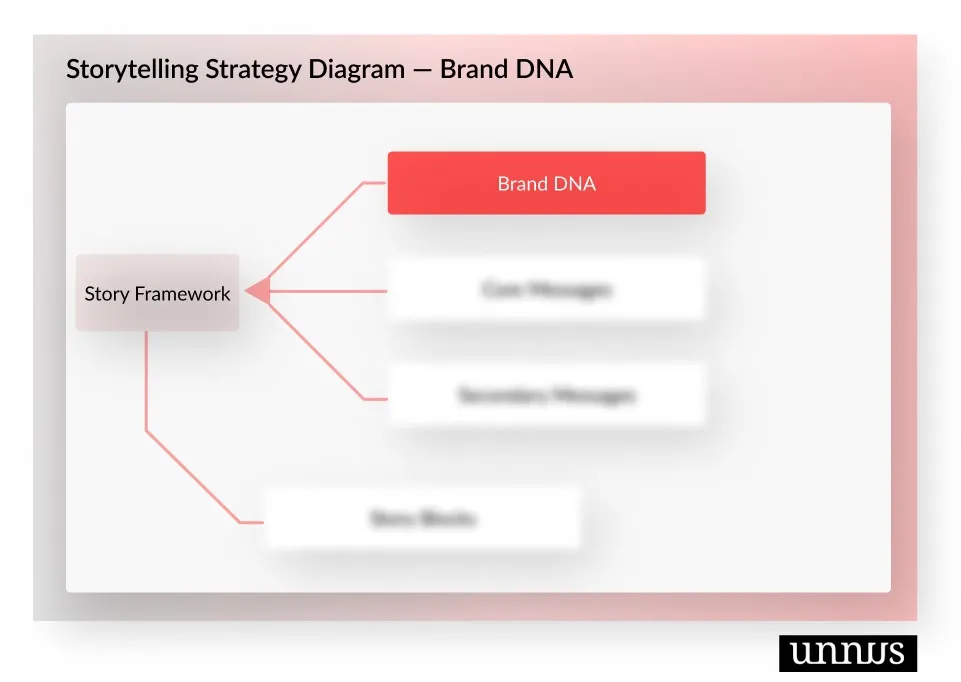
Brand DNA refers to the core aspects of your business. The credo of your firm and the values that glues it together. To have a proper brand DNA, your company needs to have an answer to the three following questions:
- What is it that the company does?
- How does your company do it? how is that different from the others? And;
- Why does it matter and why should your company exist (besides making a profit)?
Most medical device companies know What they’re doing, some know the How, but few know the Why. And if they do, they are rarely vocal about it.
Why does your company exist besides making money? And why should anyone care? This seemingly easy but surprisingly hard-to-answer question is the difference between average companies and great ones.
To see why this is the case, let’s examine two types of marketing messages:
- What/how Messages: This is marketing which focuses on describing what the product does, its features, and how it benefits the medical professional.
- Why Messages: are communication that is meaningful, trust-infused, and weaves credible stories about the products.
As much as we like to stress the features and the benefits of the what/how messages, our brain responds better with Why Messages. Messages that tell stories, inspire, and trigger us to take action.
To further illustrate the effectiveness of Why Messages, Here’s an illustration that shows what part of the brain light up depending on what kind of marketing messages we receive:
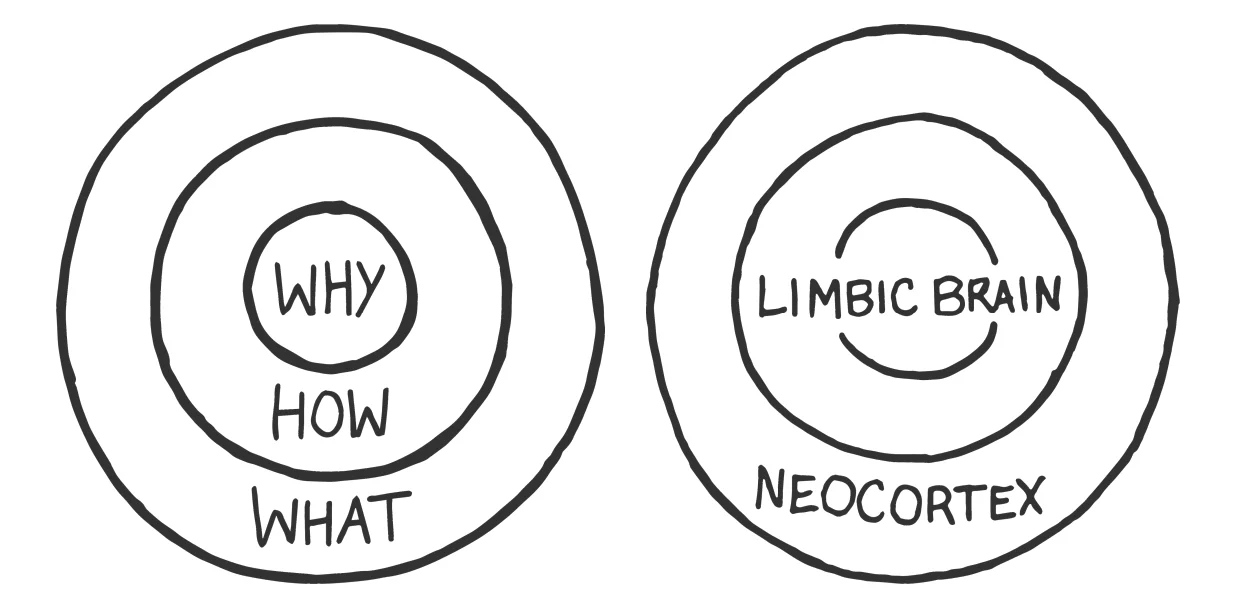
People don’t buy what you do; they buy why you do it
― Simon Sinek
In his book, Simon Sinek proposes that people don’t buy what you do but they buy “why“ you’re doing it. The reason for this lies within our biological structure. We value purpose-driven messages more than robotic, bland value offerings. And we make our decision based on how much we trust we got from said messages.
# BOTTOM LINE
“If I can trust the maker, I can buy it now and worry about it later. The degree of trust I feel towards the product, rather than an assessment of its features and benefits, will determine whether I’ll buy this product or that product”
Stage 2: Developing Core Messages
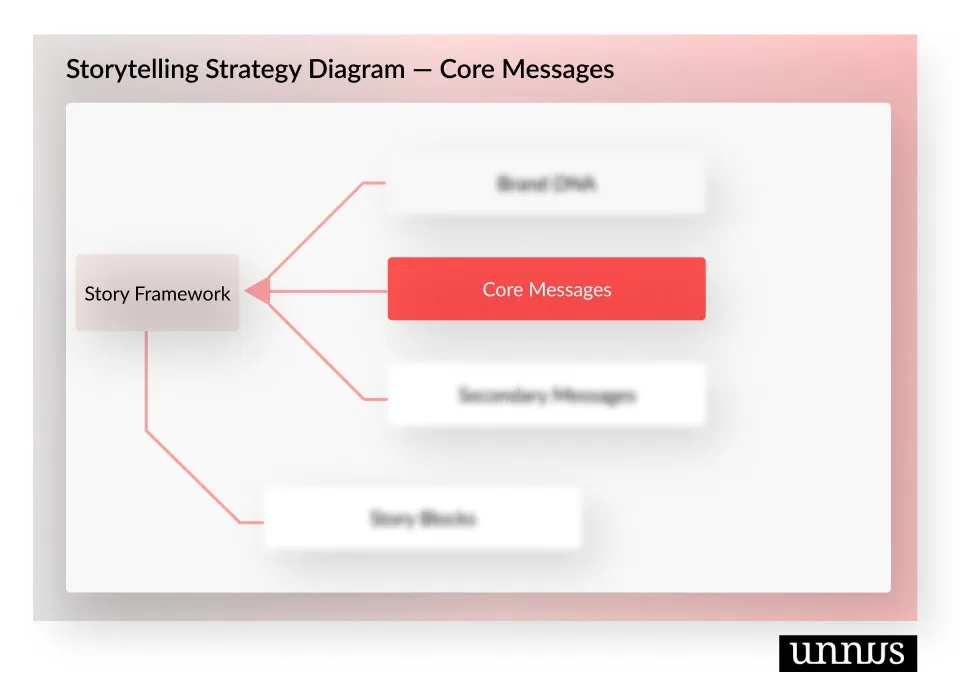
Core messages are all you need your audience to know about your brand, how it can benefit providers, and what makes it different. These messages will not focus on your brand per se but on what it can do for your audience and how they can benefit from it.
In particular, core messages should contain the following:
- Differentiators
- What makes your product/company different from other alternatives? And how can this benefit your audience?
- Key Benefits
- What are the benefits & features your product provides to healthcare providers? How does it enhance the patient experience or outcomes?
- Audience
- Who is your target audience and what do you want them to understand about your brand? And why are we catering to them?
- Pain-Points
- What challenges they are facing your products can solve? How these obstacles are hindering their progress?
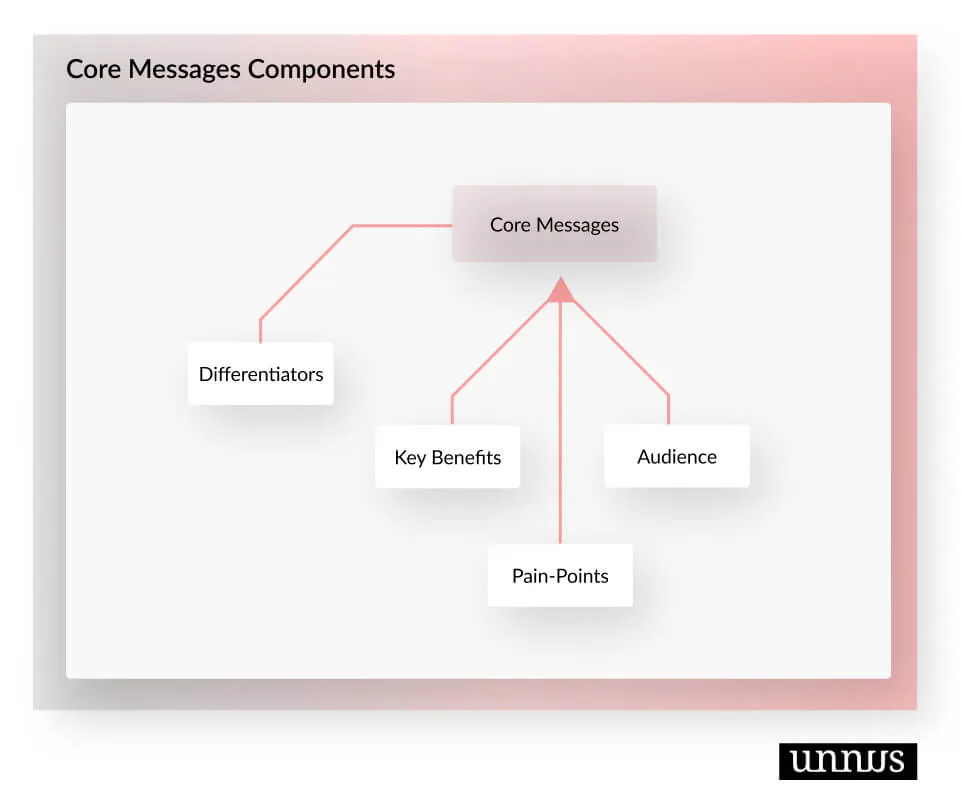
These messages will shift your brand from the “me too” imitative products and provide physicians a razor-sharp picture of how you’re different.
In addition, these messages will act as the theme of your storytelling campaign and will direct every touchpoint your audience has with your brand.
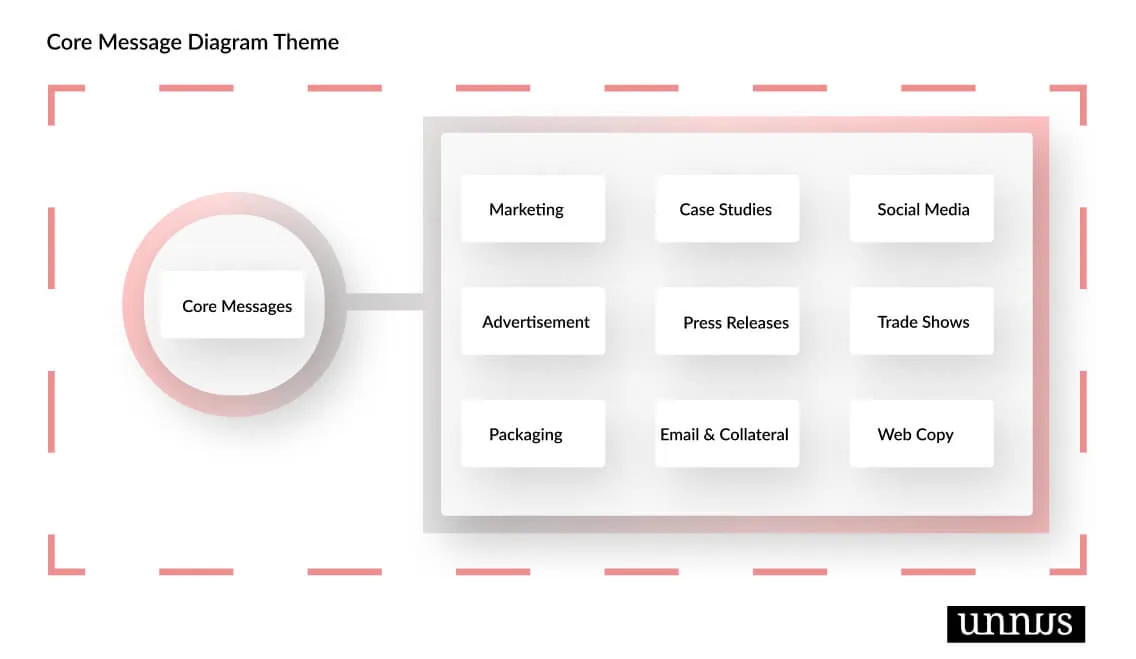
Stage 3: Developing Secondary Messages
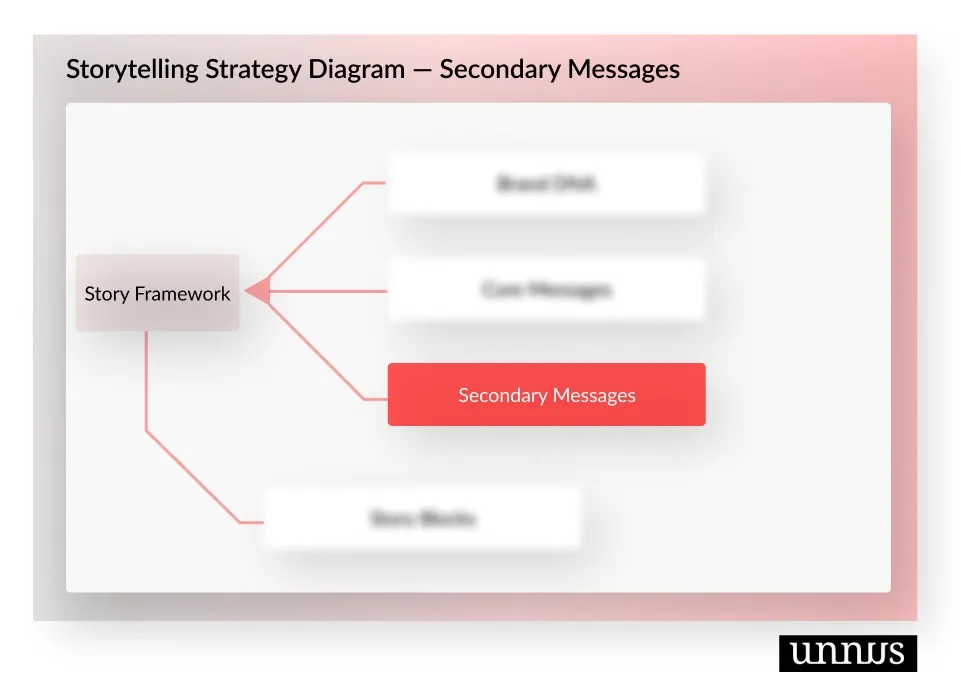
Secondary messages are more centered around your brand, its purpose, and mission. In this stage, we’ll hone in the true north that guides your firm and the values it upholds. These messages are secondary to the campaign but are crucial for brand awareness.
The components will include:
- The Brand’s Why
- Its purpose and driving force that guides the whole company. What are the meaningful messages that you want your audience to perceive from your firm?
- Future Brand
- What is the aspiration your firm is trying to achieve? How does that correlate with healthcare professionals? What’s the true north of the brand?
- The Brand’s How
- How will you accomplish these goals and endeavors? And what makes your firm’s approach different from the alternatives?
- Brand Pillars
- What are the key principles that direct the company? Are there any guidelines that help the brand navigate the uncertainty of market change?
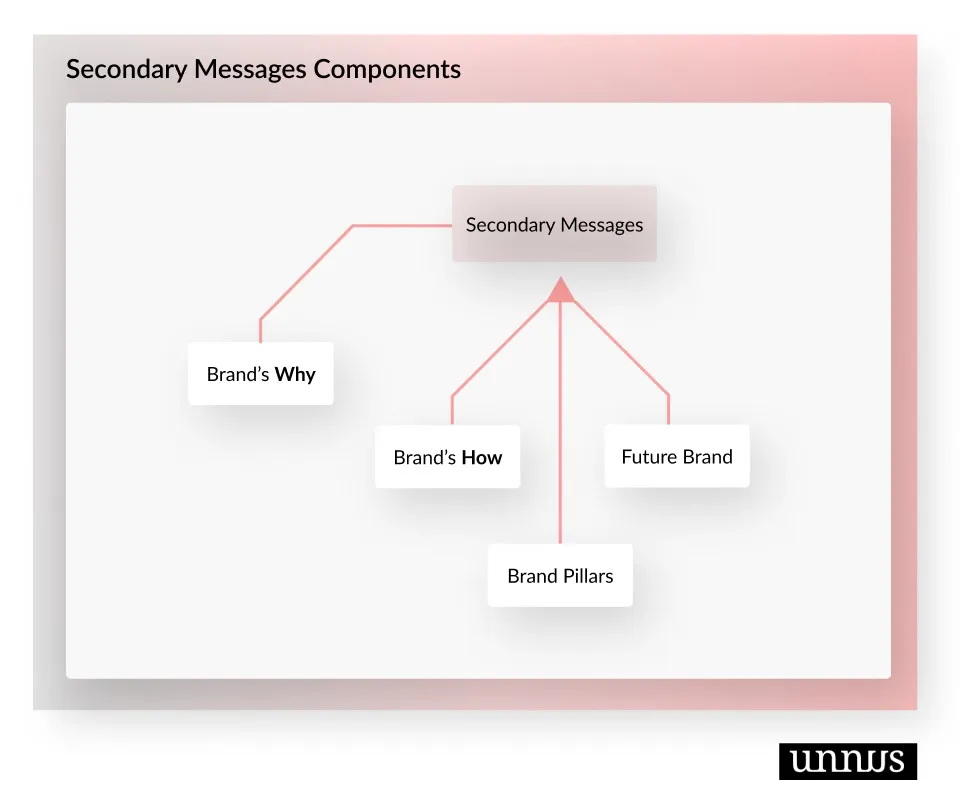
Stage 4: Communication Framework Development
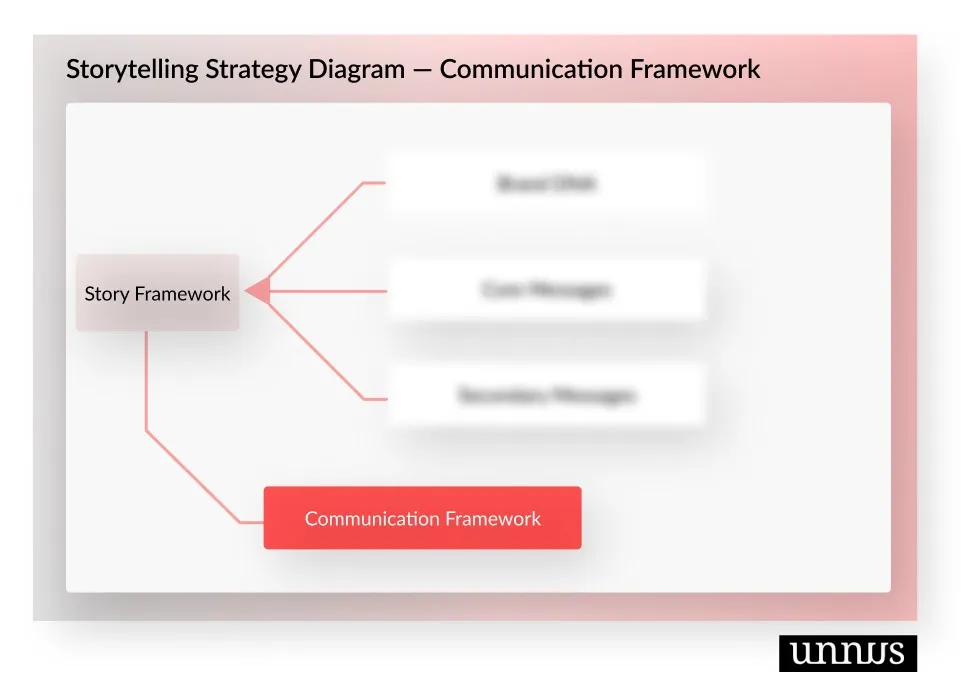
If you’re in the MedTech industry, your customers are probably busy doctors or physicians and won’t have the time to hear your “story about x”.
Your audience’s attention span is limited. And to convey these messages you’ll need a new way of communication. This is where the communication framework comes in. At this stage, we’re going to develop a framework from which you can easily dissect the story components and communicate them to your audience.
The communication framework contains 3 main elements:
- Story blocks
- We’ll discuss this in-depth in a minute.
- Message Blocks
- These are Core Messages & Secondary Messages
- Channel Distribution
- The marketing channels which we will distribute our stories on
Story Blocks
This part of the campaign is the formula we’re going to use to launch the campaign as a form of a story. The messages we’ve been developing up until now will be deployed in a manner akin to a novel or a movie, but this time, it’ll market your company and its products.
It is important to remember that in the storytelling campaign, the “hero” is your target audience. Your brand will play the role of the “guide” or the brand that helps them solve their issues and accelerates their progress.
There are 7 critical story blocks any storytelling campaign must have:
- Current State
- This is the current state of your audience without your product/brand. At this stage, we create an environment that is relatable to your target audience and all the marketing messages should create a sense of familiarity and build trust with the audience.
- The Obstacle
- This block will contain messages that relate to the problems your audience is currently facing. all the messages here must be aimed at these issues and how we can assist the customers to navigate them.
- Call To Action
- This section will focus on the consequences of unresolved issues and what might happen if these issues are left untreated. This will trigger adaptation for your product and highlight the issues it solves.
- Meeting The Guide
- The guide here is your brand. Here we showcase what your brand can do and how it can slash your audience’s problems in half. Marketing messages in this section should reassure, assist, and help your audience progress towards better results using your products.
- Challenge
- Despite the tropes and clichés about healthcare professionals, they still have inner fears, emotional investment, and desires. In this section, we’re going to highlight these aspects and try to relate to your audience, thus creating trust and preference towards your firm.
- Change
- Your target audience is looking for a change. Otherwise, they wouldn’t buy your products. This phase will shed light on what is the impact and transformation your product had on its users.
- The New State
- Marketing in this stage will be on how your audience’s life without the problems they faced before. Unlike the first story block, messages here will focus on how life is after your product/brand solved all of the audience’s issues.
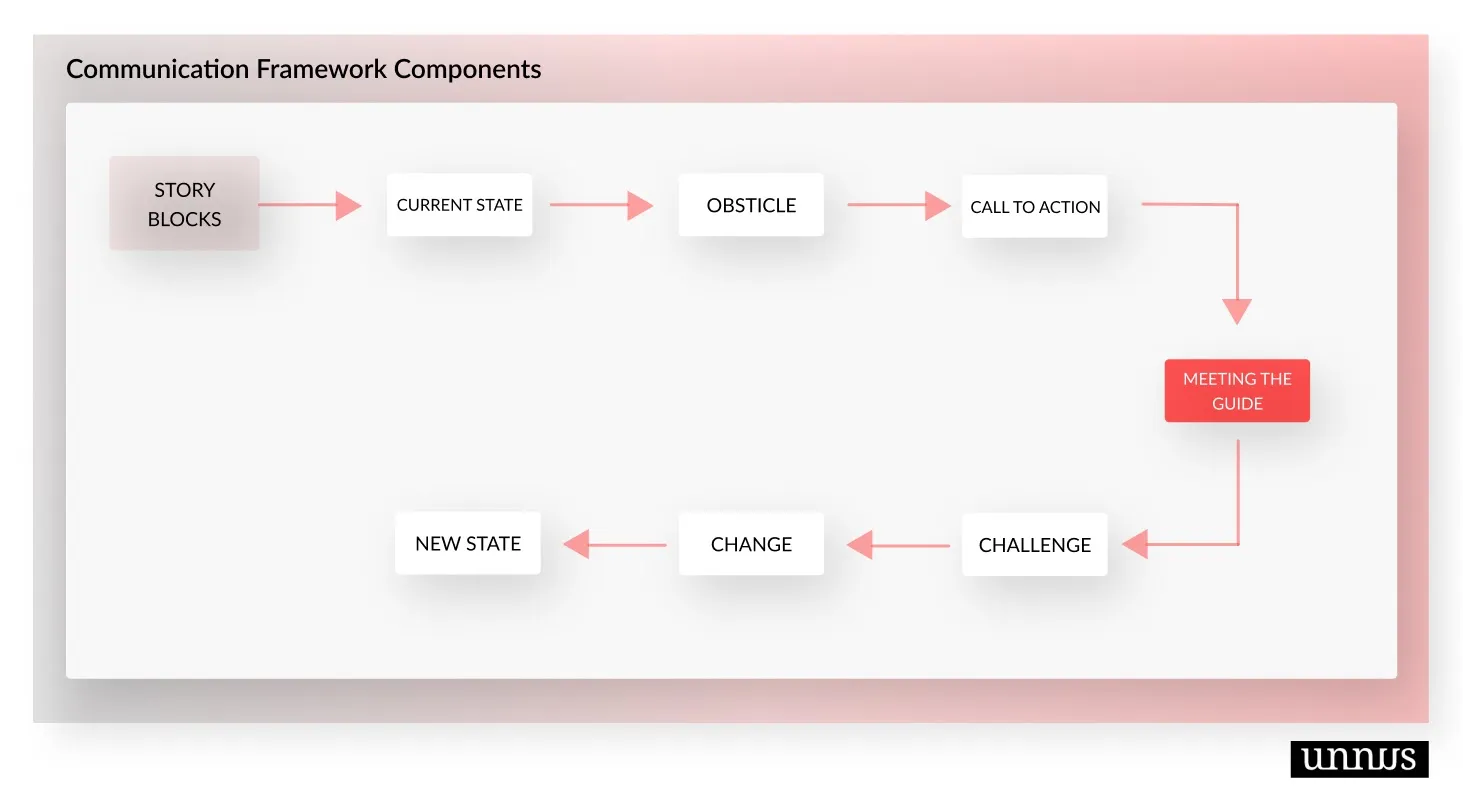
Examples of medical device marketing using storytelling
Now that we have our Message Blocks and Story Blocks, we can use the Communication Framework to form marketing assets and deploy our messages.
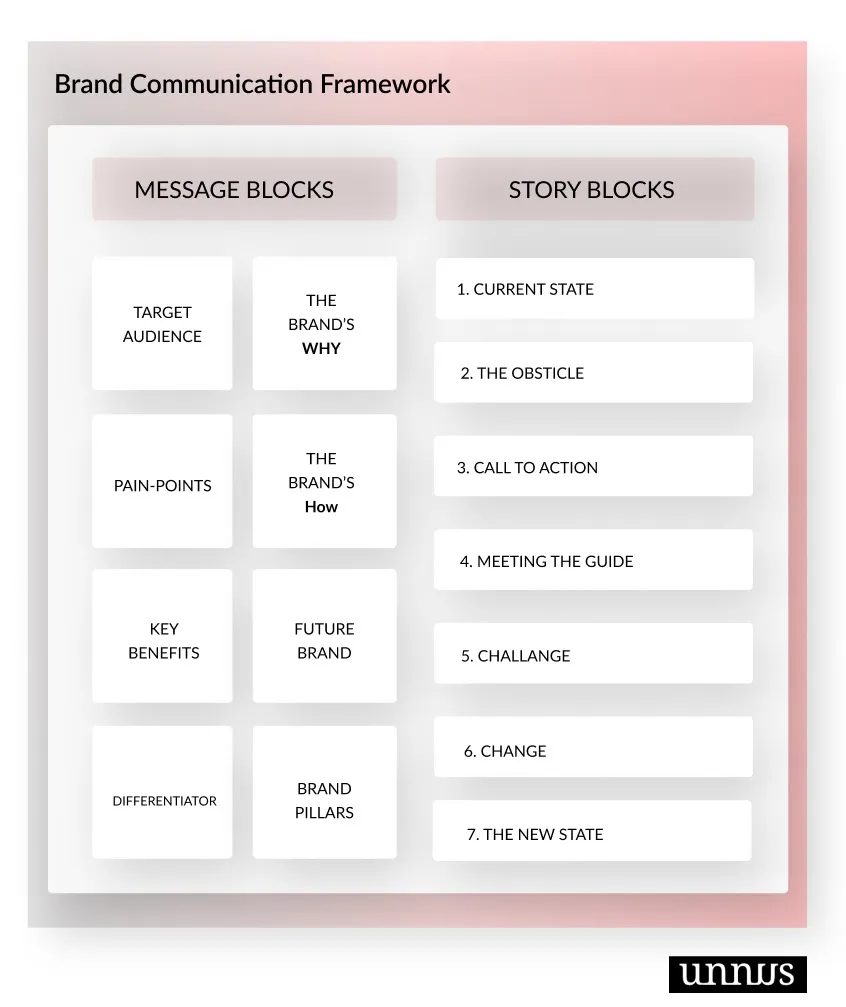
To launch the campaign, we need to select what part of the story we need to market.
Let’s say that your audiences are dentists and your firm sells CEREC Machines. A good way to start the storytelling campaign would be to form a combination between dentists’ pain-points and their obstacles.
Here’s an example of the selection process:
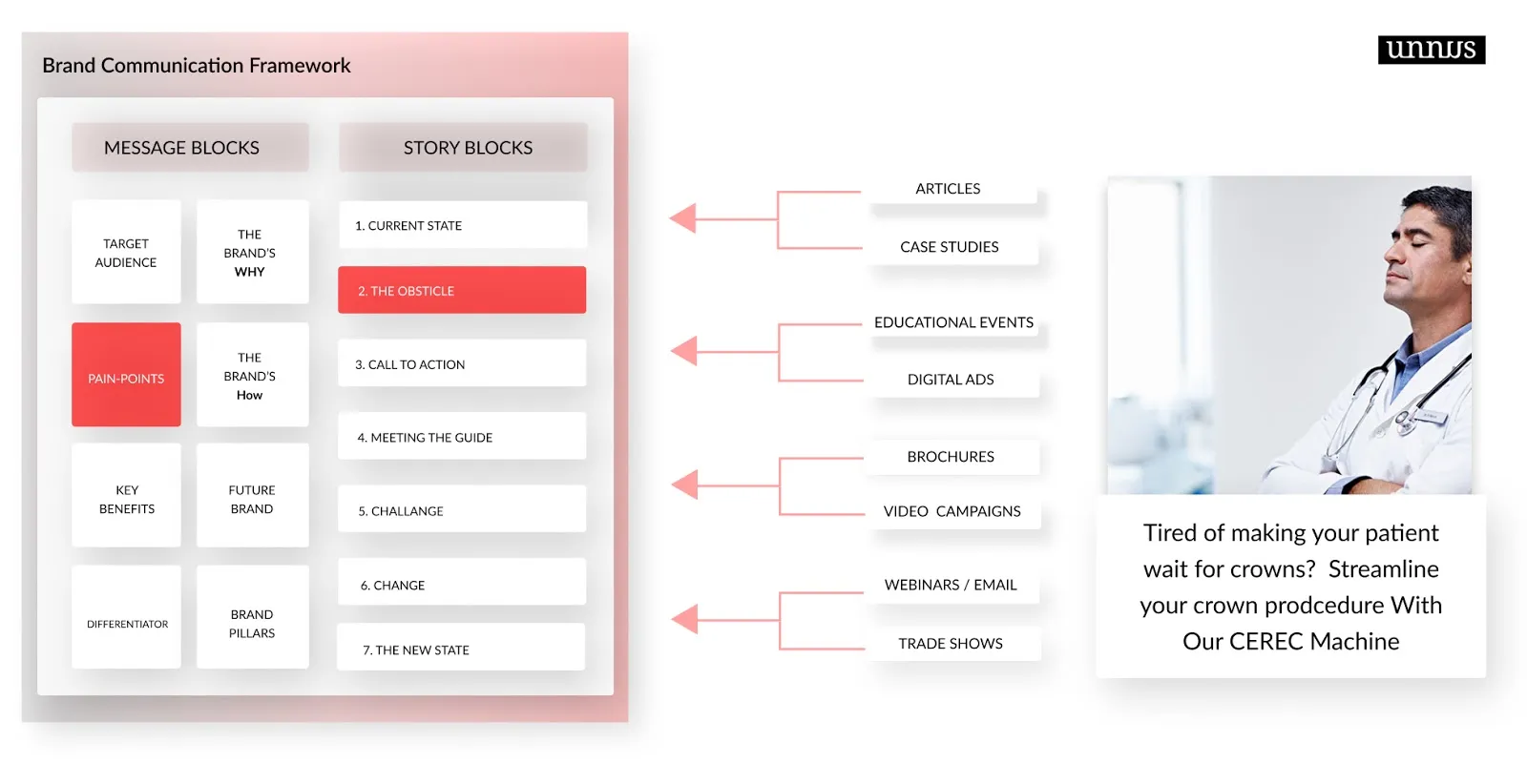
The beauty of this framework lies in your ability to narrate your core messages in a way that speaks directly to your customers and creates
brand preference
towards your brand.
This way of marketing your medical device company will transform its brand equity (perceived value) and creates a bias towards your firm in the sea of sameness.
Now, all that is left is selecting what part of the story we’re going to tell next and in what medium or platform the story will be distributed.

Another example of a storytelling strategy executed well is
Getinge
’s recent campaign highlighting their groundbreaking ventilator technology.
In the video, we follow a neonatologist (their target audience) delivering a baby at a hospital. In a series of clips, going backward in time, we see the doctor as she gets younger.
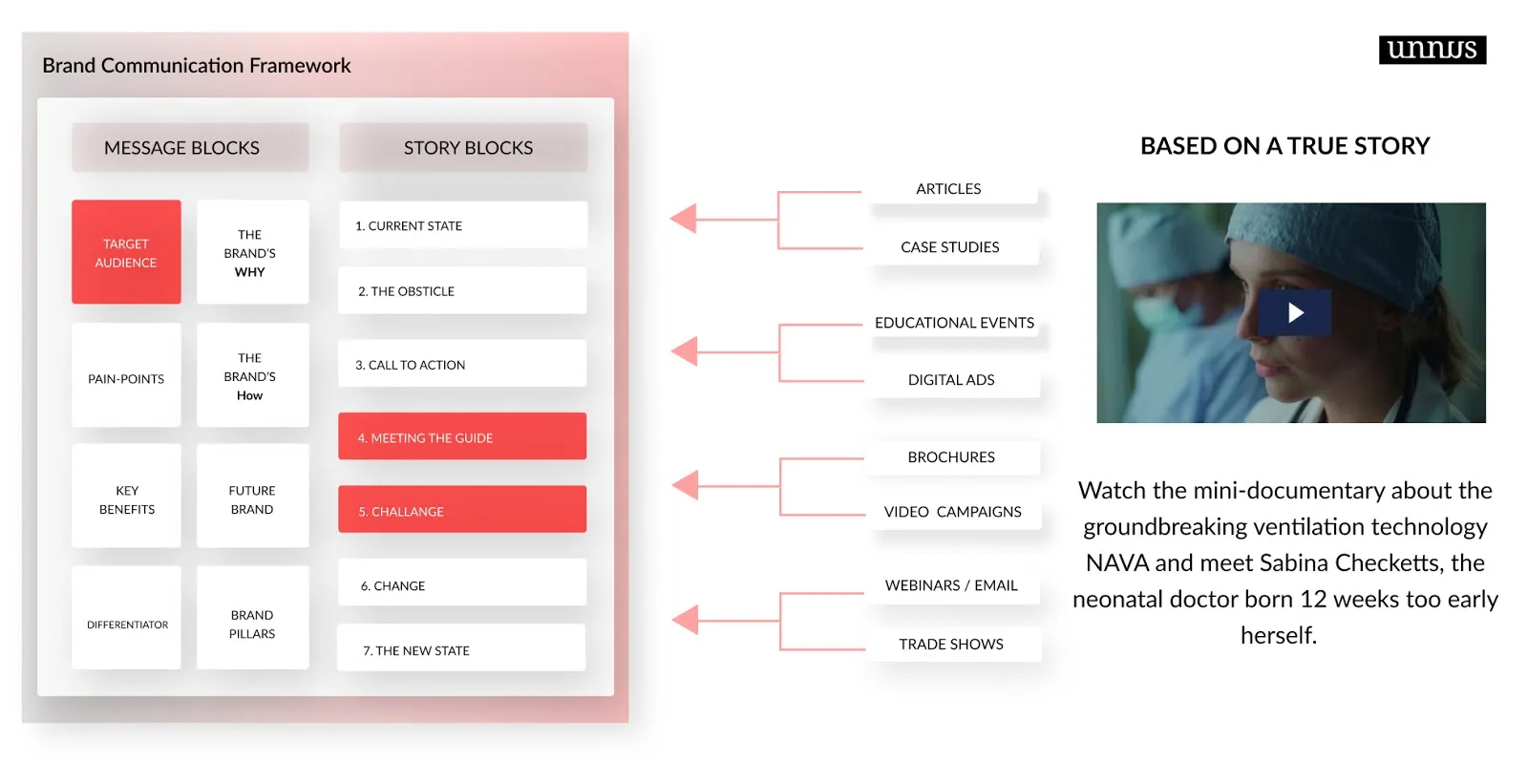
Here’s Getinge’s video story:
The truth about medical device marketing
In 2021, Medical device marketing has changed from the traditional conservative approach of reaching medical professionals to a more creative and potent way. And storytelling marks the peak of a strong, trustworthy way of marketing your firm and its product portfolio.
With the recent studies showing the effectiveness of this strategy, MedTech companies are adopting a new way of connecting with their end-users with a more resilient strategy.
A strategy that is based on creating a preference for your brand, cult-like loyalty, and cutting through the lookalike products.


